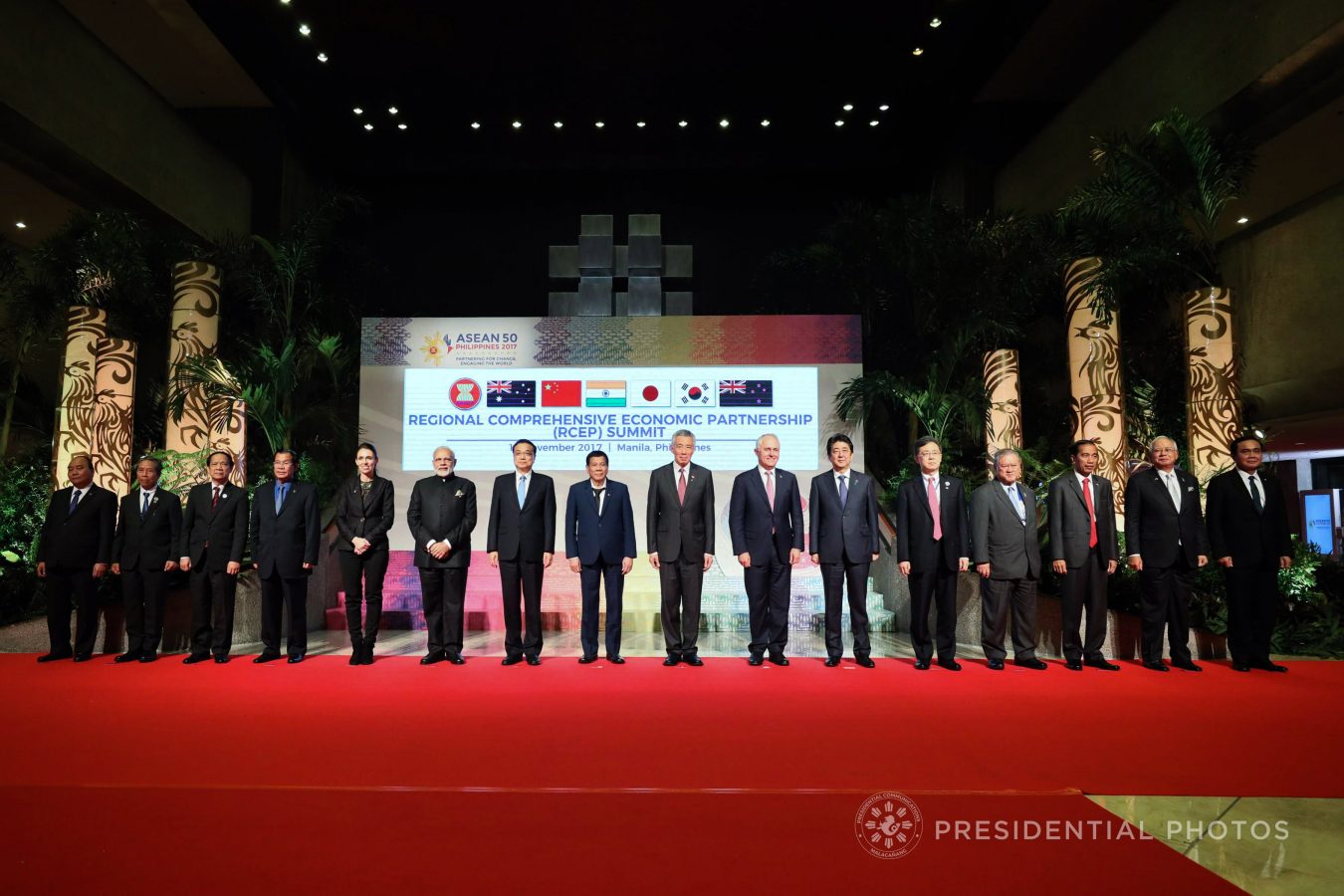News
ASEAN, partners to fast-track RCEP conclusion in 2018

Leaders from the countries participating at the Regional Comprehensive Economic Partnership (RCEP) on Tuesday have instructed its ministers and negotiators to intensify efforts in 2018 to bring the RCEP negotiations to conclusion. (PCOO PHOTO)
MANILA — Leaders from the countries participating at the Regional Comprehensive Economic Partnership (RCEP) on Tuesday have instructed its ministers and negotiators to intensify efforts in 2018 to bring the RCEP negotiations to conclusion.
The RCEP, composed of the 10 Association of Southeast Asian Nations (ASEAN) member states and ASEAN’s free trade agreement (FTA) partners, namely Australia, China, India, Japan, South Korea, and New Zealand gathered on Nov. 14 in Manila for the partnership’s summit.
In its joint statement, the leaders reiterated that the conclusion of the RCEP agreement would be a key driver of growth and a pathway to further integrate our economies.
With the 16 participating countries sharing almost half of the world population, RCEP’s potential accounts to 31.6 percent of the global output, 28.5 percent of the global trade and a fifth of the global foreign direct investment inflows in 2016.
According to the leaders, this is a certain path that leads to job generation, sustainable growth, inclusive development, and innovation.
The leaders noted that despite the recent global economic slowdown, rising protectionism, and antiglobalization sentiments, the region’s economies have remained resilient and continued to grow apace relative to the rest of the world.
“We acknowledged the valuable contribution of trade openness and regional economic integration which cushion the region from the more volatile global macroeconomic environment, allowing us to maintain our robust economic performance,” the heads of states said.
During the summit, the 16 leaders committed to conclude an agreement that realizes the objectives in the guiding principles of the RCEP by delivering outcomes in three pillars of market access, rules, and cooperation.
To deliver these outcomes, the heads explained RCEP will need to consolidate the ASEAN+1 FTAs and build new economic linkages between the bloc’s FTA Partners that do not have bilateral FTAs with each other.
At the same time, RCEP would also need to consider partcipating countries’ different levels of development and include appropriate forms of flexibility including provision for special and differential treatment.
Among others, they will need to ensure the additional flexibility to the least-developed ASEAN Member States, consistent with the existing ASEAN+1 FTAs, as applicable.
While this negotiation continues to be a complex and challenging task, the heads are optimistic they will achieve “a modern, comprehensive, high-quality and mutually beneficial economic partnership agreement” negotiated as a single undertaking that would support an open and enabling trade and investment environment in the region.
At the opening ceremony of RCEP Summit, President Rodrigo Duterte stressed that envisioned RCEP is not simply an added trade agreement but “a trade agreement that could provide the size and scale to unleash new growth potentials and write the new rules of the game of the international trade order.”
On behalf of the ASEAN, Duterte said the bloc is committed “to the FTA that balances the needs of all countries but maintains the high level of ambitions.”





















